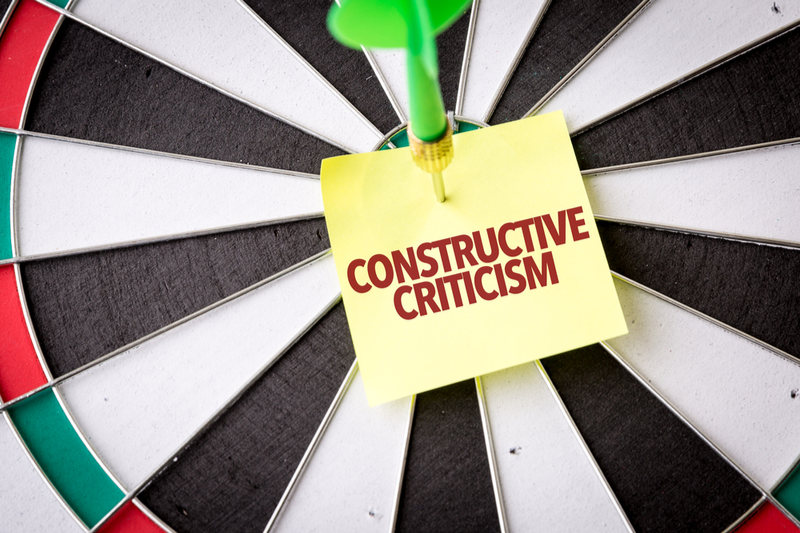When it comes to employee engagement, managers play a much more important role than they expect – and your impact on how to improve engagement goes far deeper than simply setting up a rewards system, offering a few more sick days, and hoping for the best.
Feedback, and how managers prepare and administer it to their employees, can directly make or break employee engagement.
 The number of people who were engaged/disengaged after receiving feedback from their managers, says a 2018 Gallup Workplace Experiences Panel Survey, is about 50% regardless of if the feedback is positive or negative. However, those who began to passively/actively search for new positions after receiving negative feedback was almost 80% (40% of those who receive positive feedback were still searching for a new job in some form).
The number of people who were engaged/disengaged after receiving feedback from their managers, says a 2018 Gallup Workplace Experiences Panel Survey, is about 50% regardless of if the feedback is positive or negative. However, those who began to passively/actively search for new positions after receiving negative feedback was almost 80% (40% of those who receive positive feedback were still searching for a new job in some form).
Does solely providing positive feedback correspond with better employee engagement then?
Of course not – employees want to be able to perfect their work by constructively building their skills and talent, and they can’t do so (and they might actually get annoyed) if managers are constantly saying “you’re doing a great job” but not telling them why they’re doing well or how they can improve.
We talk about employee feedback and its impact on engagement in our Brand Builder Episode: How to Give Radical Feedback (Without Being an Asshole) with SnackNation’s Chelsie Lee and Sean Kelly
If you’re eager to start providing the right feedback in the right format – and effectively begin properly engaging your employees – here are 8 tips for you to consider when providing feedback to improve engagement:
Page Contents (Click To Jump)
Turn “constructive feedback” into “coaching conversation”

The composition of the workplace has changed. Giving feedback was once an important function for hierarchical, downwards office settings (where the manager had little other interaction to guide employees through their daily tasks). Now, employees are more autonomous and managers are sitting alongside them instead of upstairs. Typical feedback structures no longer work. An article on Gallup agrees, saying, “this means managers can’t just give employees feedback about what they did ‘right’ or ‘wrong.’ They must listen, ask questions, gain context and create a two-way dialogue.”
Managers should be viewed and interpreted as coaches who exist to remove barriers, arrange tasks, and to be mentors that can be approached by employees at any time. Instead of letting your staff know when they’re doing something ‘right’ or ‘wrong,’ instead, informally ask them how they feel about a certain task or their workload in general.
Understand the most common mistakes that lead to feedback failure

We admit it, even if we’re not perfect. But, if we’re willing to see where our mistakes have happened – and admit we’ve made them – then we’re more likely to get close to perfect. There are common mistakes that so many managers make when delivering feedback.
Here’s three:
Deciding to give no feedback at all. That’s just not right on all accounts and will come back to bite you in the butt (probably in the form of poor employee retention).
Only giving feedback once a year. Nothing can be more nerve-wracking than having all the past year’s feedback dumped on you all at once. “If only,” your employees say, “my manager had let me know I was doing that task wrong – I would have fixed it ages ago.”
Doing all the talking. If you want feedback to improve engagement, then you need to give your employees the opportunity to be engaged – and that means opening up a conversation. It needs to be less about you talking and more about motivation and communication. There are even anonymous employee feedback tools that give you the ability to capture first-hand feedback from your employees in a safe and secure environment.
Make your feedback conversation as productive as possible

Only 14.5% of managers strongly agree that they give good feedback. That leaves the majority of leaders who either think they could use a little guidance or could know that they’re terrible and refuse to ask for help. It makes for a very unproductive feedback session – and could be more detrimental to productivity in general.
Avoid overused and predictable feedback methods, such as the sandwich method, and begin planning your feedback with purpose – and have it be less about formality and more about fostering a culture where employees feel like they can share in the productivity (and give their own opinions and feedback) of the company as a whole.
Having a plan and strategy for each individual employee’s unique role, including certain touchpoints that you know will ensure the feedback meeting as a whole is productive instead of time-consuming. If you send your mini-schedule to each employee with time for open conversation, they will know what to expect and can also prepare for the meeting themselves.
Make feedback a normal part of your corporate culture

The truth is, most companies don’t have a strong feedback culture – or they haven’t incorporated feedback at all. Yet how are managers supposed to develop a strong corporate culture based on proper feedback when they haven’t been trained how? Offices have changed and those who trained our managers today are leaving the workforce for retirement, leaving wide-spread Millennials with a thirst to prove themselves.
It’s important to model that feedback culture yourselves through your own work and solidify it as part of your entire business process and purpose. Trust us, that culture will find its way through if you continue to give good feedback (not necessarily positive feedback) and continue to promote an open workplace that recognizes everyone’s achievements.
In those moments when bad feedback or impatience escapes towards an employee, continue to foster open communication by admitting your mistakes and offering to solve the problem by developing a plan of action and continuing to promote positive culture across the entire office.
Create a system that prevents problems instead of only focusing on “problem-solving”

If you can properly integrate a system that prevents common issues, you can cut the chances that problems, such as employee retention and engagement, will arise and need to be solved. Problems are unavoidable, but a recognition program promotes a functionality that minimizes the after-shock and keeps the conversation open.
An employee recognition or rewards program is a modern solution for acknowledging staff members’ achievements when they go above and beyond expectations but also when they act according to the company’s culture/purpose. It gives employees a purpose to work harder because they’ve been recognized as an important facet of the company as a whole.
We’ve highlighted the benefits of an employee recognition system: “By incorporating an employee recognition or rewards program as part of your feedback regime, you’ll begin to notice that more staff strive to do well in their work, be more punctual, and even accept negative feedback as a stepping stone to achieving their best work.”
Utilize the extremely cost-effective method of recognition to improve the engagement of your employees

You will probably agree that our minds tend to often play tricks on us; for some of us, no news is automatically interpreted as bad news. For most employees today, being quiet about delivering feedback or recognition can be detrimental to your overall culture.
Take Anna, for example, who put in extra hours at work in order to complete a huge proposal by the deadline. She gave it her all and delivered the project on time, but received absolutely no feedback or even a reassuring smile from her manager. Instead, her own mind told her she probably messed it up or that no one really cared. And then you have Steve, who was supposed to help her and put in very little effort. Without being given feedback, he was left believing he had done his job properly. In this scenario, the cost of losing Anna to another employer as well as the loss of Steve’s productivity took a toll on the company’s bottom line.
Recognition, even when it involves a monetary award, will actually save your company money in the long-run. According to an article on Gallup, the best forms of recognition are actually free, such as public recognition in the form of an award or certificate, private recognition, or a promotion/increase in trust at the workplace. And acknowledgment from a CEO or manager? It’s one of the most sought after forms of praise that employees yearn for – even if it’s something as simple as a positive remark.
Promote the concept of peer-to-peer recognition

Of course, manager to employee feedback – when done effectively – is a huge influence on employee engagement. However, we mustn’t forget that culture and engagement wouldn’t exist/wouldn’t succeed if employees didn’t want to be around each other. Peer-to-peer recognition is paramount to ensuring engagement and inclusiveness spreads throughout the entire workplace.
A flexible and open workplace, where co-workers can interact (even between departments), recognize each other (and their CEOs), and be flexible to work in areas other than their cubicle, has become more than a perk, says Deloitte, it’s essential for making work fit into our lives.
“‘high-recognition companies’ have 31 percent lower voluntary turnover than companies with poor recognition cultures. These companies build a culture of recognition through social reward systems (tools that give people points or kudos to reward others), weekly or monthly thank-you activities, and a general culture of appreciating everyone from top to bottom. The key to success here is to create a social environment where recognition can flow from peer to peer, freeing managers from being the judge and jury of employee recognition.”
And, saying even a simple ‘thank you’ to a coworker actually releases oxytocin, which is the hormone in our bodies that makes us feel relaxed and happy. By building a loyal team who don’t want to ever find another job, your company is actually saving huge amounts of money, because the average cost to recruit and hire for one position is approximately 9 months of that position’s salary.
Realize that the best employee feedback is instant feedback

It’s a comfortable feeling knowing that, as a manager, you feel comfortable giving feedback and know that you’ve incorporated the right practices to make sure it’s the good kind. It’s important that with this new culture, consistency and informality are key. It’s no longer enough to schedule a yearly review and drop 12-months of feedback on your employees.
Keeping your office door open, both metaphorically and literally, is essential for maintaining employee engagement across the board long-term. Regardless of if you’ve let your team know that you’re always available, don’t stop asking questions and initiating the conversation yourself.
If you’ve concluded that your feedback has been in short supply because you haven’t the time to reach out to each team member individually in person, employee recognition programs make it easier for you and your entire company to communicate and recognize each other’s accomplishments in real-time. Badges and other awards, as well as tracking progress to larger rewards, can all be done in one app – which in effect brings your team together in one virtual place.
The 21st century has awarded businesses with so many technological rich solutions to many business barriers that our predecessors often faced. Although communicating in person is crucial, engagement can be built and consistent in busier offices with the use of an online rewards system.
When companies develop the mindset that their business’ yearly feedback and peer reviews have been successful, even when their retention of employees is lower than ever, that’s when we know that there’s a resistance to change or to correlate a lack of engagement with a manager’s poor feedback skills.
There are many options to slowly integrate more productive methods into your company, starting with our 8 tips but ending with a desire to promote culture and bring your organization up to where it needs to be. The first decision should be to recognize that there is no perfect office and that there can always be constructive development in every office. It’s when you get comfortable not changing and not improving that excellence moves further away.
“We are what we repeatedly do. Excellence then, is not an act, but a habit.” – Aristotle
“We are what we repeatedly do. Excellence then, is not an act, but a habit.” - Aristotle Share on X
What has been your experience with providing employee feedback? Let us know in the comments below!







Great tips for improving engagement!
I learned a lot from these guidelines.
As a HR professional, I might try these tips.
Thanks again for nice share.
Very happy to hear that! Which was your favorite employee feedback suggestion?